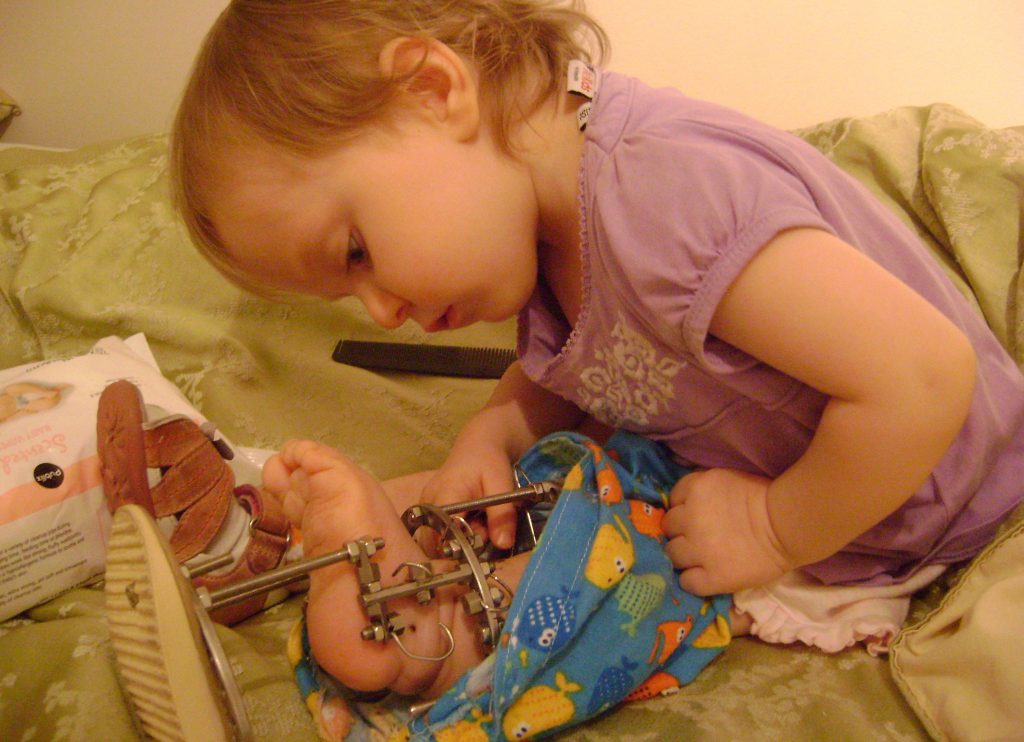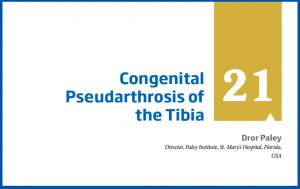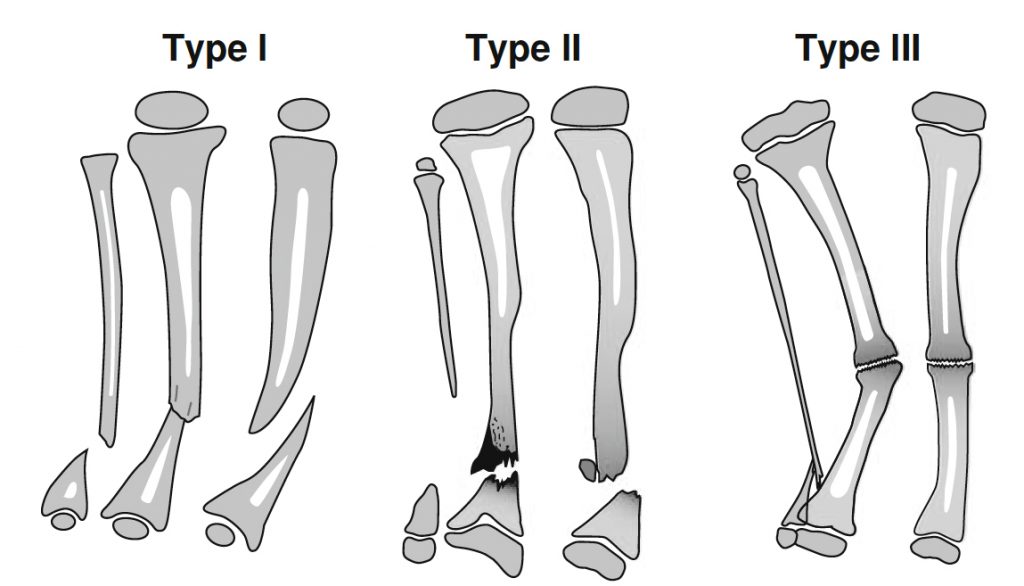Congenital pseudarthrosis of the tibia (CPT) refers to nonunion of a tibial fracture that develops spontaneously or after a minor trauma. A pseudarthrosis is defined as a “false joint” and is a break in the bone that fails to heal on its own. The pseudarthrosis usually develops within the first two years of life; however, there have been reported cases of CPT development before birth as well as later in life.
For a comprehensive overview of CPT, check out Dr. Paley's recent book chapter on the deformity:
Congenital pseudarthrosis of the tibia is a very rare condition, occurring in only 1 out of 250,000 births. The cause of CPT is currently unknown; however, there is a strong association with neurofibromatosis in 50% of cases and and an association with fibrous dysplasia in 10% of cases. Reports indicate the pathologic processes of CPT are linked to the periosteum, which forms the outer layer of bones and is crucial for regrowth following a fracture. Patients with CPT have a thick scar layer surrounding their bones rather than the periosteum. For this reason, once a fracture has occurred it will not heal spontaneously. The current theory on the mechanism of CPT is that there is a lack of blood supply to the periosteum caused by an accumulation of nerve cells that destroy the blood vessels connected to the periosteum. This leads to low oxygen in the periosteum (known as hypoxemia). Since the periosteum is responsible for bone growth, this results in weakening of the bone.

Classification Systems
Classification systems of CPT based on onset, mobility, and x-rays have been proposed. Difficulties of classification, however, have arisen because the condition includes different clinical and pathological entities each with a different history and prognosis. For example, classification systems based on the appearance of the tibia can become confusing since the appearance can change during treatment.
Dr. Paley, in conjunction with Dr. El-Rosassy, developed a classification system designed to indicate prognosis and treatment. The El-Rosassy-Paley classification system divides CPT into three types based on two criteria: the geometry of the bone ends and how mobile they are—that is, whether the bone ends at the pseudarthrosis are thick and stiff or thin and mobile. Another important consideration in the El-Rosassy-Paley classification is whether the patient has undergone a previous, unsuccessful surgery.
Type 1
- Atrophic (narrow) bone ends
- Mobile pseudarthrosis
- No previous surgery
Type 2
- Atrophic (narrow) bone ends
- Mobile pseudarthrosis
- Previous unsuccessful surgery
Type 3
- Hypertrophic (wide) bone ends
- Stiff pseudarthrosis
Congenital pseudarthrosis of the tibia remains one of the most challenging and misunderstood conditions in orthopedics. The difficulty of treatment lies in the weak healing power at the fracture site, a tendency to refracture after treatment, and the difficulty of stabilizing small osteoporotic bone fragments in small children. Even in cases where a union has been achieved, there is a difficulty in maintaining it. Frequently, the end result is a frustrated child and family who have been through multiple failed surgeries and remain with a limb that is short, deformed, and almost functionless. For this reason, many orthopedic surgeons recommend amputation, particularly after a third failed surgery.
Dr. Paley has worked to improve the results of treatment for CPT for 28 years. He has published 4 papers on this subject during this time. His latest method, which has remained unchanged since 2007, has resulted in 100% union and zero refractures. This is an unprecedented statistic for this debilitating condition. The success rate has become so consistent that we no longer consider this a difficult problem to treat at the Paley Institute, which is in great contradistinction to everywhere else.
Please see Dr. Paley's recent article on Congenital Pseudarthrosis of the Tibia.
Watch Dr. Paley's online lecture about CPT - Congenital Pseudarthrosis of the Tibia

